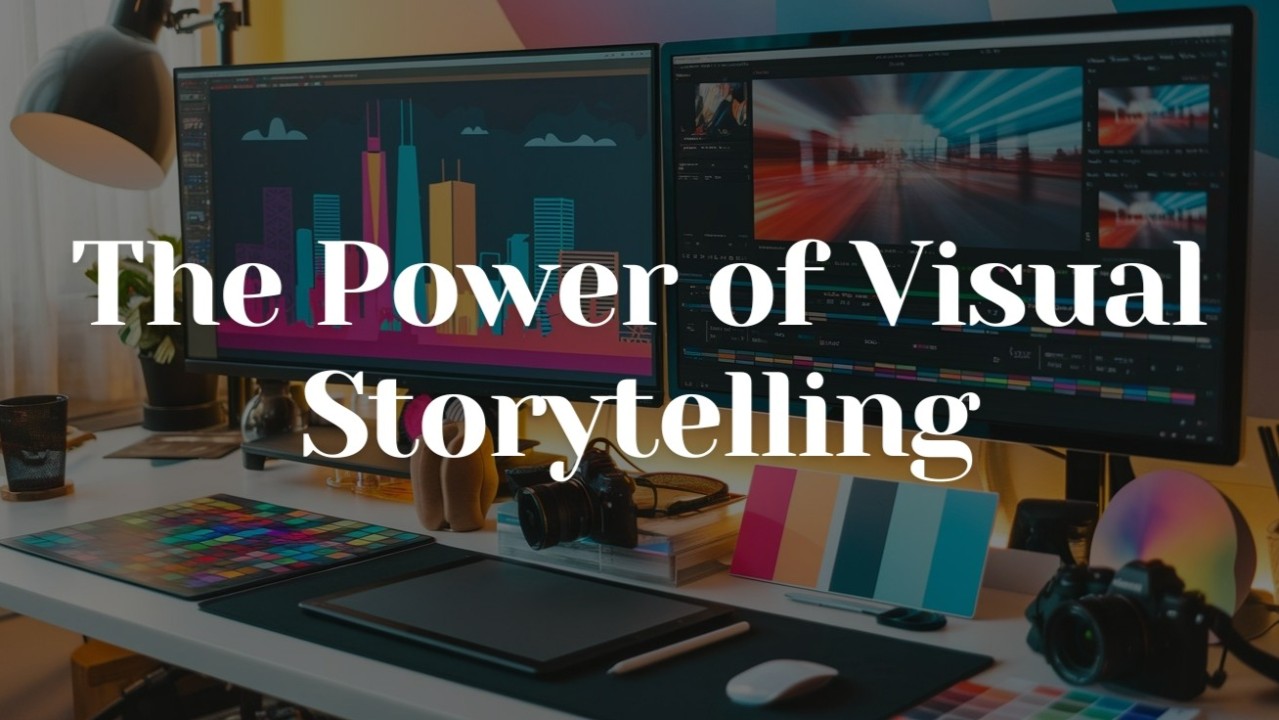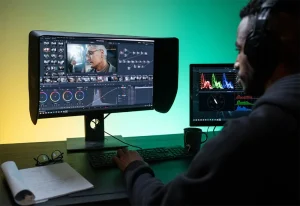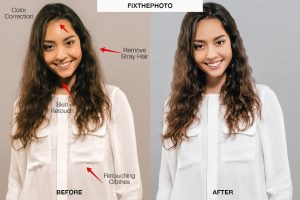In the art of visual storytelling, editing is crucial. It transforms raw footage into compelling narratives that resonate deeply with audiences. With advanced software, you can seamlessly integrate visuals, audio, and effects to enhance emotional impact. Editing shapes pacing, sets tone, and ensures coherence. Whether crafting for Instagram’s bite-sized content or YouTube’s longer formats, tailoring edits to platforms captivates viewers. The future of editing holds exciting innovations, and there’s a lot more to uncover.
The Evolution of Editing in Digital Media
As digital media has rapidly evolved, editing techniques have undergone a dramatic transformation, changing the way stories are told and experienced. You now have access to advanced software that allows for seamless integration of visuals, audio, and effects, creating richer narratives. Gone are the days of laborious manual splicing; instead, you enjoy intuitive drag-and-drop interfaces that streamline the process. This evolution empowers you to make precise edits, adjust pacing, and enhance the emotional impact of your work.
You can instantly experiment with different cuts, transitions, and styles, pushing creative boundaries like never before. The digital realm also offers you collaboration opportunities with others across the globe, ensuring diverse perspectives enhance your projects. Embrace these innovations, and you’ll craft visually stunning stories with ease.
Crafting Compelling Narratives Through Editing
To craft compelling narratives through editing, focus on the art of storytelling that captivates and resonates with your audience. Begin by understanding the core message you want to convey. This clarity will guide your editing choices, ensuring each scene supports the narrative. Pay attention to pacing; it determines the emotional rhythm of your story. Fast-paced edits can build excitement, while slower transitions allow moments to breathe, creating depth.
Consider your audience’s perspective. What emotions do you want them to feel, and how can your editing choices evoke these feelings? The right cut, transition, or shot can significantly impact their experience. Always aim for coherence, ensuring each element contributes to the overarching story. By doing so, you create a narrative that engages and leaves a lasting impression.
Techniques to Enhance Storytelling With Editing
Enhancing storytelling through editing hinges on mastering a few key techniques that can transform a good narrative into a memorable one. First, focus on pacing. By thoughtfully varying the speed of your cuts, you can build tension and maintain viewer engagement. Quick cuts can create urgency, while longer shots let emotions settle. Next, pay attention to continuity. It ensures your story flows seamlessly, keeping the audience immersed without distraction. Additionally, consider using J and L cuts to maintain audio flow between scenes, which adds depth and cohesion. Finally, harness the power of color grading. It sets the tone and mood, subtly guiding the viewer’s emotional response. By refining these techniques, you’ll elevate your storytelling, making it more impactful and unforgettable.
The Emotional Impact of a Well-Edited Story
When a story is well-edited, it doesn’t just tell a tale; it resonates with the audience’s emotions on a deeper level. You feel more connected to the characters and their journeys. Effective editing highlights crucial moments, drawing you into the narrative and making you care about what happens next. You might find yourself on the edge of your seat, feeling joy, sadness, or suspense, all because the story flows seamlessly. A well-edited piece knows when to slow down for impact or speed up to keep the pace exciting. Every cut, transition, and sound choice is intentional, designed to evoke a specific emotion. In the end, a well-edited story leaves a lasting impression, making the experience unforgettable.
Editing for Different Platforms and Audiences
When you’re editing for different platforms, it’s crucial to tailor your techniques to fit each medium’s unique requirements. Consider how audience expectations shift across platforms and make content adjustments that resonate with them. You should also adapt the tone of your story to match the platform, ensuring your message aligns with both the audience and the medium.
Platform-Specific Editing Techniques
While every platform has its unique flair, understanding the specific editing techniques for each can drastically enhance audience engagement. On Instagram, focus on visually striking images and brief, compelling captions. Use the platform’s tools like reels and stories to keep your content fresh and dynamic. For YouTube, prioritize longer-form content with engaging intros and smooth transitions to maintain viewer interest. Editing should emphasize storytelling and pacing to match the platform’s audience expectations. TikTok demands snappy, attention-grabbing edits, often with popular trends and music. Keep videos short and energetic, making the most of effects and text overlays. On LinkedIn, maintain a professional tone, using clean edits and informative graphics to engage a business-oriented audience. Tailor your approach; it pays off.
Audience-Centric Content Adjustments
Understanding platform-specific editing techniques sets the stage for tailoring content to diverse audiences. You must consider each audience’s preferences and how they consume content on different platforms. For instance, Instagram users often prefer visually captivating, concise content, while LinkedIn audiences might look for informative, professional material. Tailor your edits to fit these expectations.
Start by analyzing audience demographics and engagement patterns. Are they young, tech-savvy individuals who prefer quick, dynamic edits? Or are they professionals seeking in-depth analysis? Adjust content length, style, and visual elements to align with these insights. Also, remember to incorporate platform-specific features like hashtags, captions, or stories to enhance engagement. By focusing on audience-centric adjustments, you ensure your visual storytelling resonates and achieves its intended impact.
Adapting Tone for Platforms
Crafting the right tone for each platform is crucial, as it directly influences audience engagement and perception. When editing visual stories, you must consider the unique characteristics and audiences of each platform. For instance, Instagram favors visually appealing and concise content. Your tone here should be lively and engaging to capture scrolling users. On LinkedIn, a more professional and informative tone is appropriate, catering to a business-focused audience. Meanwhile, TikTok thrives on humor and creativity, inviting a more casual and playful tone. Understanding these nuances allows you to tailor your content effectively. By doing so, you ensure your message resonates with viewers, maximizing impact and reach. Always adapt your storytelling approach to meet the expectations and preferences of each platform’s audience.
The Future of Editing in Visual Storytelling
As technology continues to evolve, the future of editing in visual storytelling promises to be both exciting and transformative. You’re about to see editors using AI to enhance creativity, automate tedious tasks, and focus more on storytelling. Imagine AI analyzing hours of footage, suggesting edits, and even predicting audience reactions. It’s not about replacing you but empowering your creative decisions.
Virtual reality and augmented reality are also reshaping storytelling. You’ll be crafting immersive narratives, where viewers interact directly with the story. This requires a new level of editing skills, blending traditional techniques with innovative approaches.
Stay adaptable and embrace these technologies. They’re your tools to create more engaging, dynamic stories that captivate audiences in ways we’ve only begun to imagine.
Frequently Asked Questions
How Does Editing Influence the Perception of a Narrative?
Editing shapes your perception by highlighting key moments, guiding emotions, and pacing the story. It controls the flow, emphasizes themes, and clarifies complexities, ensuring you engage with the narrative in a meaningful, impactful way.
What Role Does Color Grading Play in Visual Storytelling?
You’d be amazed at how color grading shapes your emotional response to a scene. It sets the mood, highlights themes, and guides your focus, turning raw footage into a visually cohesive and compelling story.
How Can Editing Address Continuity Errors in a Film?
You can address continuity errors by carefully reviewing footage, maintaining a detailed shot log, and using clever cuts to ensure seamless transitions. It’s crucial to match lighting, props, and actor positions to keep the audience engaged.
What Software Is Essential for Professional Video Editing?
You need top-notch software for professional video editing. Adobe Premiere Pro and Final Cut Pro are industry standards, offering powerful tools and flexibility. DaVinci Resolve is essential for color grading, while Avid Media Composer excels in complex editing tasks.
How Does Editing Differ Between Short Films and Feature-Length Movies?
In short films, you focus on concise storytelling, using quick cuts and pacing to engage viewers. In feature-length movies, you’re developing depth, allowing for character development and complex narratives through more extended scenes and gradual pacing.


